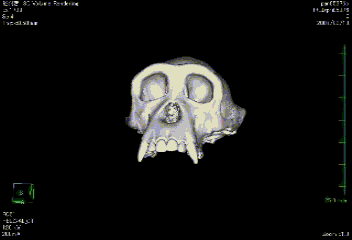HOPE Symposium 2007
|
| 11月18日(日) 東京大学農学部弥生講堂 11月19日(月) サピアタワー(東京駅前)  三次元デジタル化されたチンパンジーの頭骨。原標本:京都大学霊長類研究所収蔵:No.5376 mpeg動画もごらんください |
HOPE Symposium 2007
|
| 11月18日(日) 東京大学農学部弥生講堂 11月19日(月) サピアタワー(東京駅前)  三次元デジタル化されたチンパンジーの頭骨。原標本:京都大学霊長類研究所収蔵:No.5376 mpeg動画もごらんください |
|
Date: November 18th, 2007 1 Future of hominoid study 9:00〜9:10 9:10〜9:40 9:40〜10:10 10:30〜11:00 11:00〜11:30 11:30〜12:00 12:00〜12:20 2 Chimpanzee management strategies: An international perspective 13:30〜14:10 14:10〜14:50 14:50〜15:00 15:00〜15:40 15:40〜16:10 16:10〜16:25 16:25〜17:00 |
|
Date: November 19th, 2007 9:30-9:40 9:40-11:30 9:40-10:10 10:10-10:40 10:40-11:30 11:40-12:10 & 13:00-14:40 11:40-12:10 Lunch 12:10-13:00 13:00-13:50 13:50-14:40 Coffee break 14:40-15:00 15:00-16:20 15:00-15:50 15:50-16:20 |
| 参加申し込みは不要、無料です。 お尋ねは以下までご連絡ください。 遠藤秀紀 〒484-8506 愛知県犬山市官林 京都大学霊長類研究所 形態進化分野 Tel 0568-63-0592、0568-63-0520 Fax 0568-61-5775 E-mail: |
|
|
講演をさらに楽しんでいただくために「生物科学」誌最新号の購入をお勧めします。9月3日に書店・図書館に並びました「生物科学」誌最新号は、遠藤企画による「60年目の霊長類学」という特集号です。古市剛史さん、香田啓貴さん、毛利俊雄さん、友永雅己さん、上野吉一さんから寄稿いただきました。 ぜひぜひ、お買い求めをお願い致します。 |
SAGA / HOPE シンポジウム
講演要旨一覧
2007年11月18日 東京大学農学部弥生講堂
2007年11月19日 サピアタワー503号室
チンパンジー・サンクチュアリ・宇土と日本のチンパンジーたち 松沢哲郎 (京都大学霊長類研究所) |
| Chimpanzee Sactuary Uto and the Chimpanzees in Japan Tetsuro Matsuzawa ( Primate Research institute, Kyoto University ) |
| − 準備中 − |